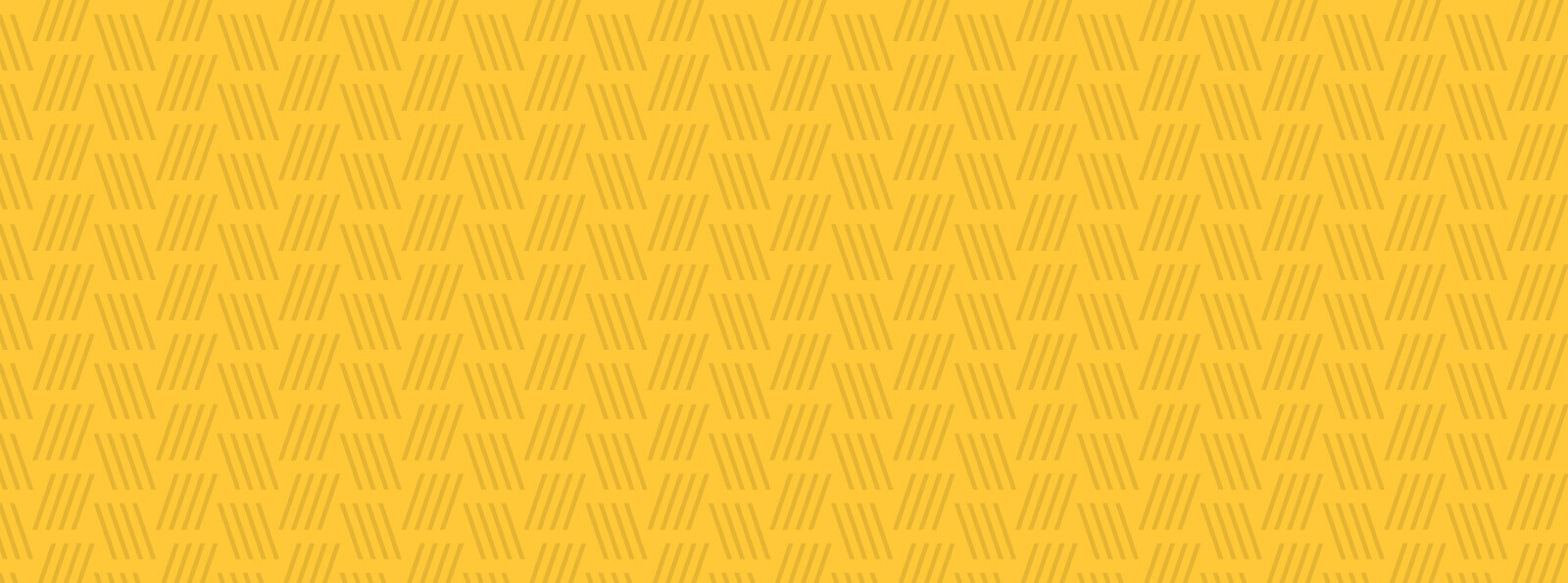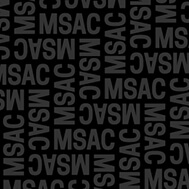Jacqui Crocetta creates ocean-centric works in which she pays tribute to the awe and wonder she feels for nature, while responding to environmental concerns. The mindset of interconnectedness is the foundation of her work.
About the Artist
Jacqui Crocetta works in painting, printmaking and sculpture. Her socially engaged practice has aimed to bring attention to both the human condition as well as the environmental crisis, while celebrating resilience and the capacity for healing. She has exhibited her work regionally in venues such as Arts in Foggy Bottom, Adah Rose Gallery, McLean Project for the Arts, MassoniArt, Maryland Arts Place, King Street Gallery (Montgomery College) and Otis Street Arts Project, and received frequent recognition in the Washington Post and East City Art. Crocetta was a fellow in 2021, 2022 and 2023 at the Virginia Center for Creative Arts and an artist in residence at the Annmarie Sculpture Garden and Arts Center in association with the Smithsonian Institution. She has been awarded several Artists and Scholars Project Grants from the Arts and Humanities Council of Montgomery County, Md. She serves on the board of directors of the Washington Print Club. Her work is included in private, corporate and public collections.Artist's Statement
Jacqui Crocetta creates ocean-centric works in which she pays tribute to the awe and wonder she feels for nature, while responding to environmental concerns. The mindset of interconnectedness is the foundation of her work. In early 2020, after visiting a beach in Florida that was heavily polluted with plastic trash, the focus of Crocetta’s work changed dramatically. Shocked by the volume of plastic on the beach, Crocetta was propelled to collect as much trash as she could carry, while documenting the process. Later, she transferred her beach clean-up photos onto single-use plastic trash in a series of mixed-media abstract wall works. That series led to ocean-inspired paintings and installations addressing issues such as the microplastic crisis, rising sea levels, coral bleaching, and overfishing. Within her layered paintings, harmony rubs up against discord, creating a subtle friction that makes space to think about our impact on the environment. The complex surfaces are intended to draw the viewer in for prolonged looking, to facilitate moments of mindfulness. Thousands of tiny dots reference microplastics, while intricate patterns convey the rhythm of ocean life.Featured Work
Photos
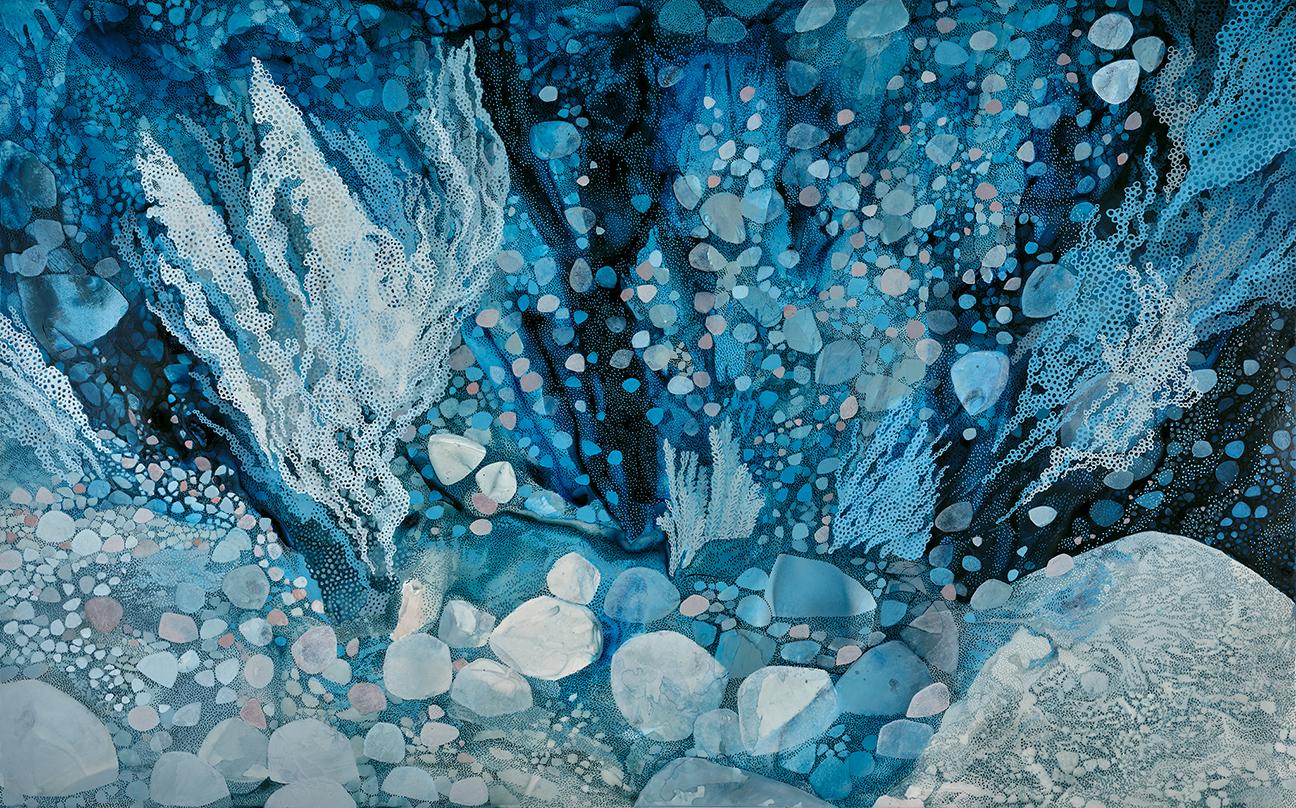
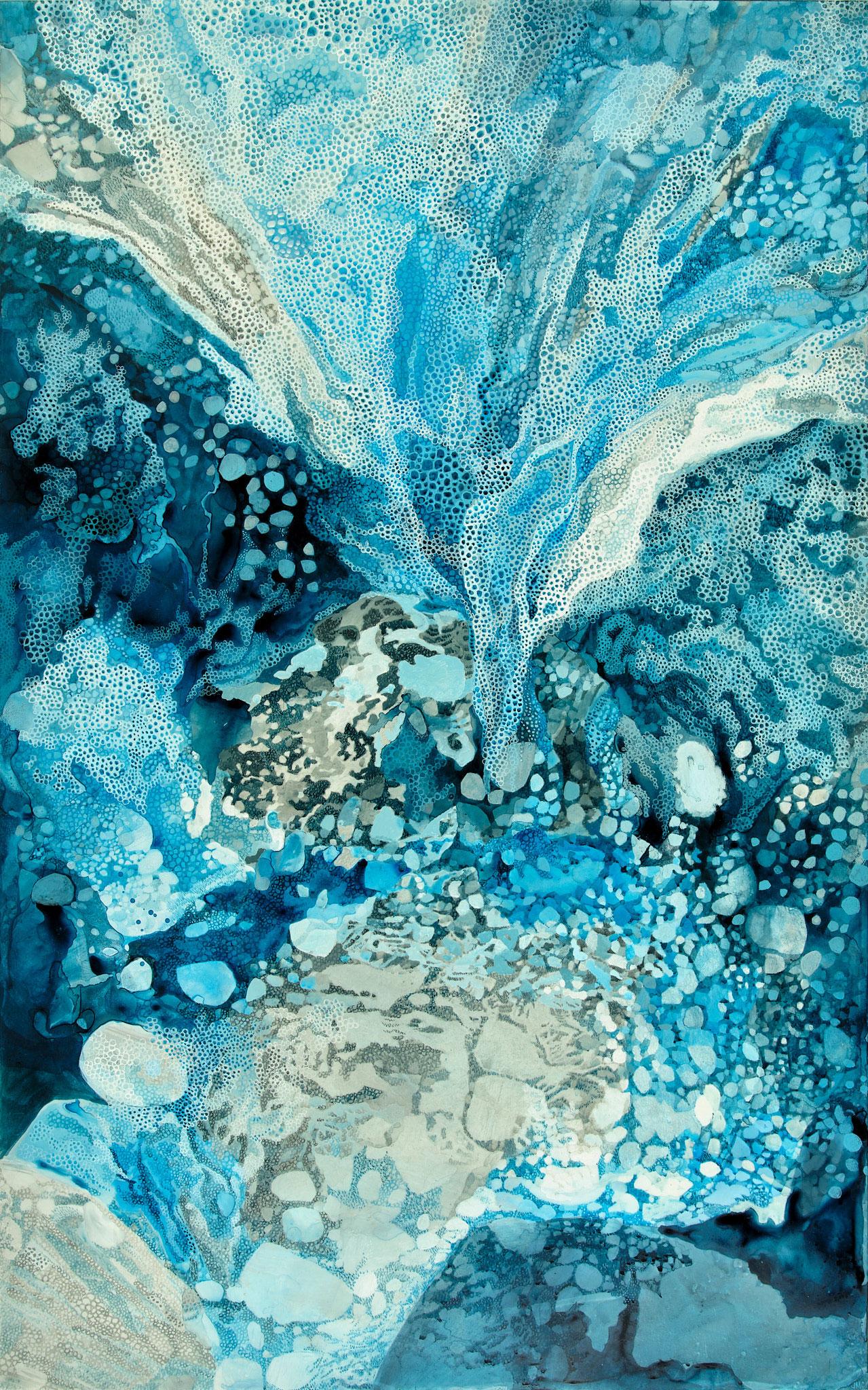
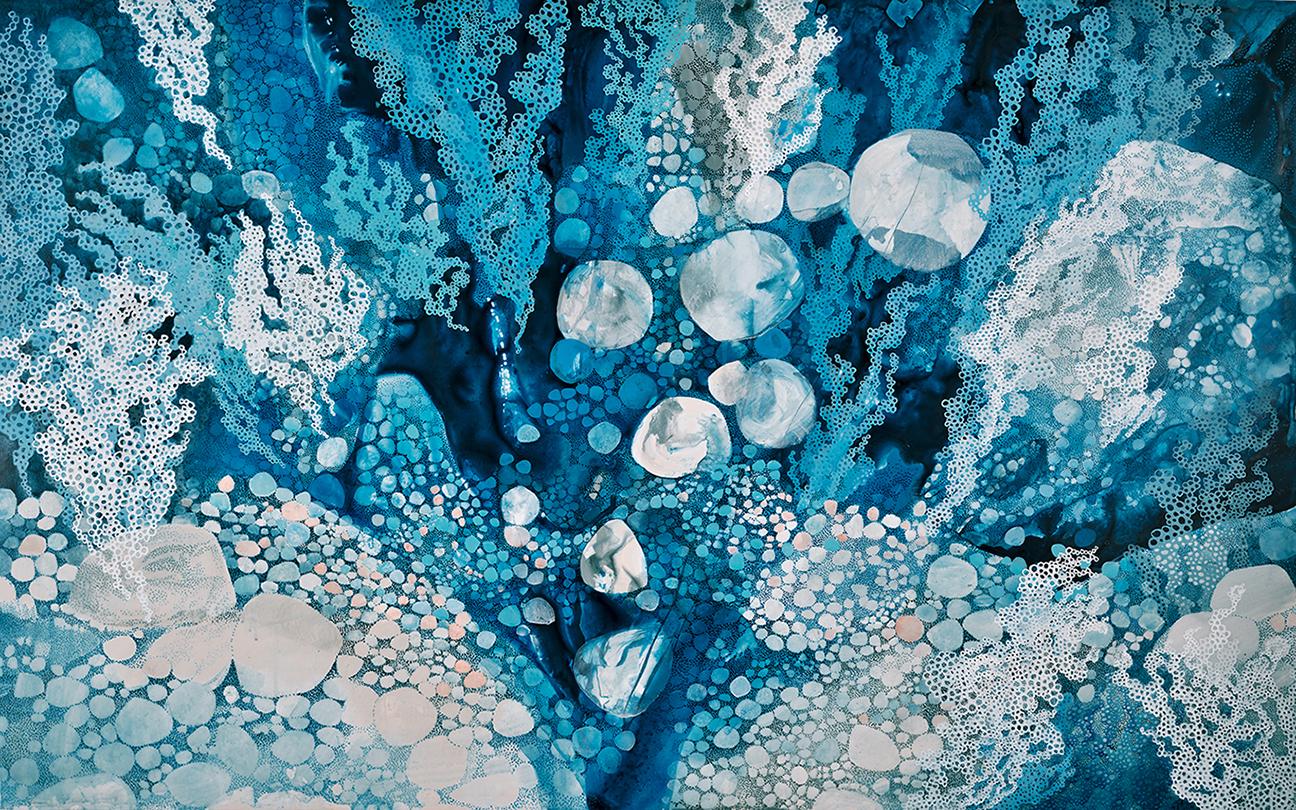
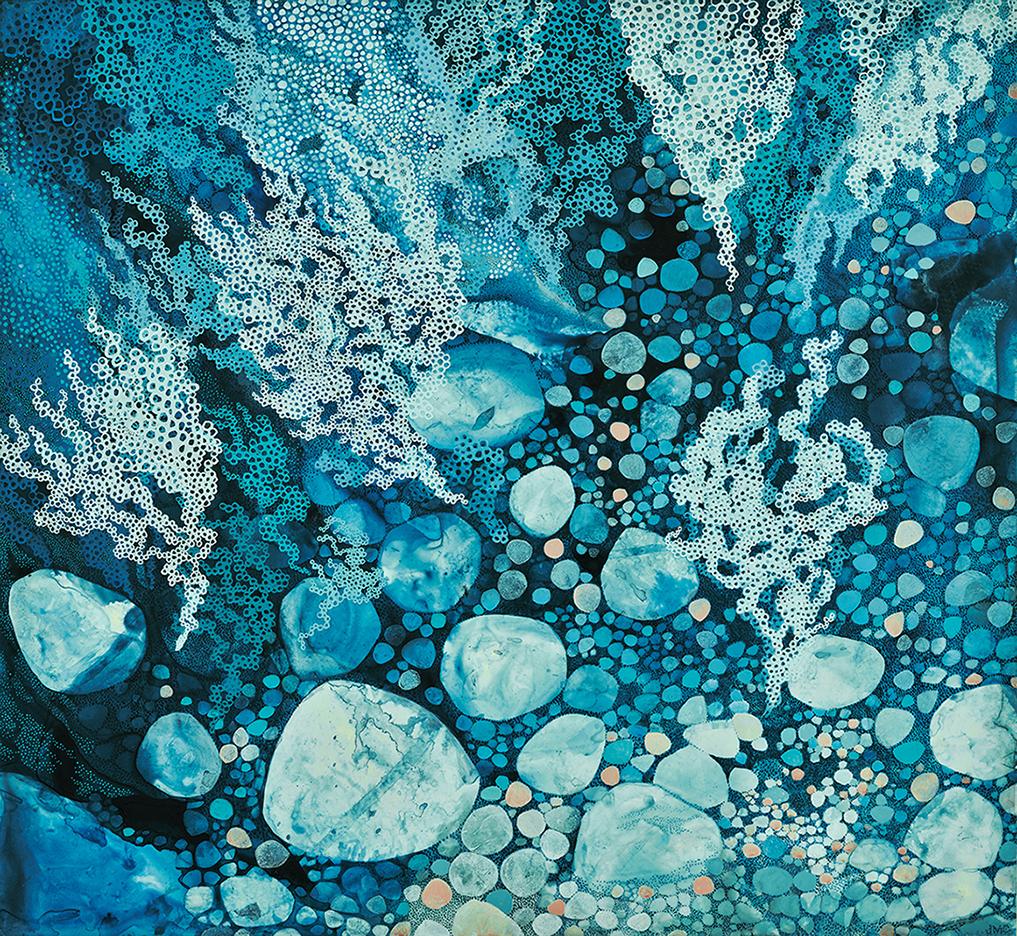
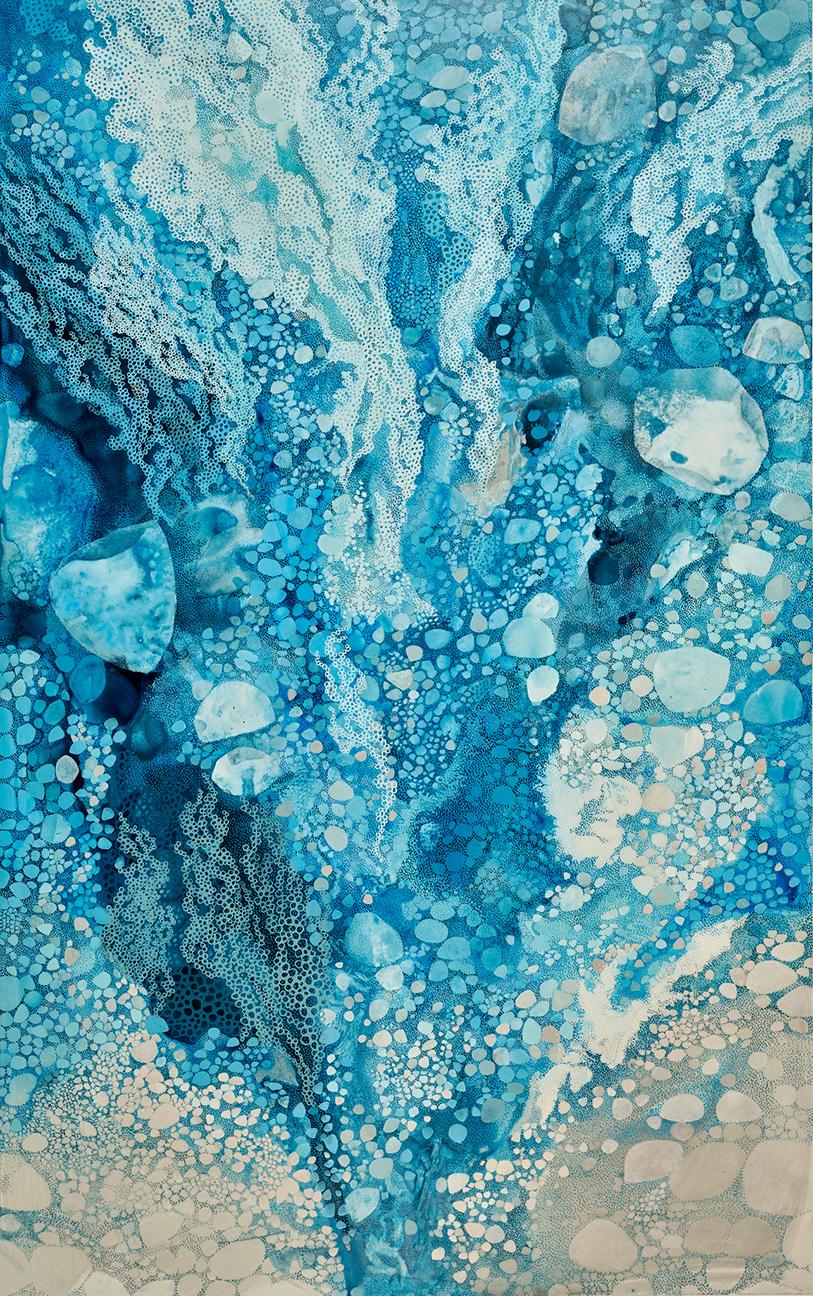
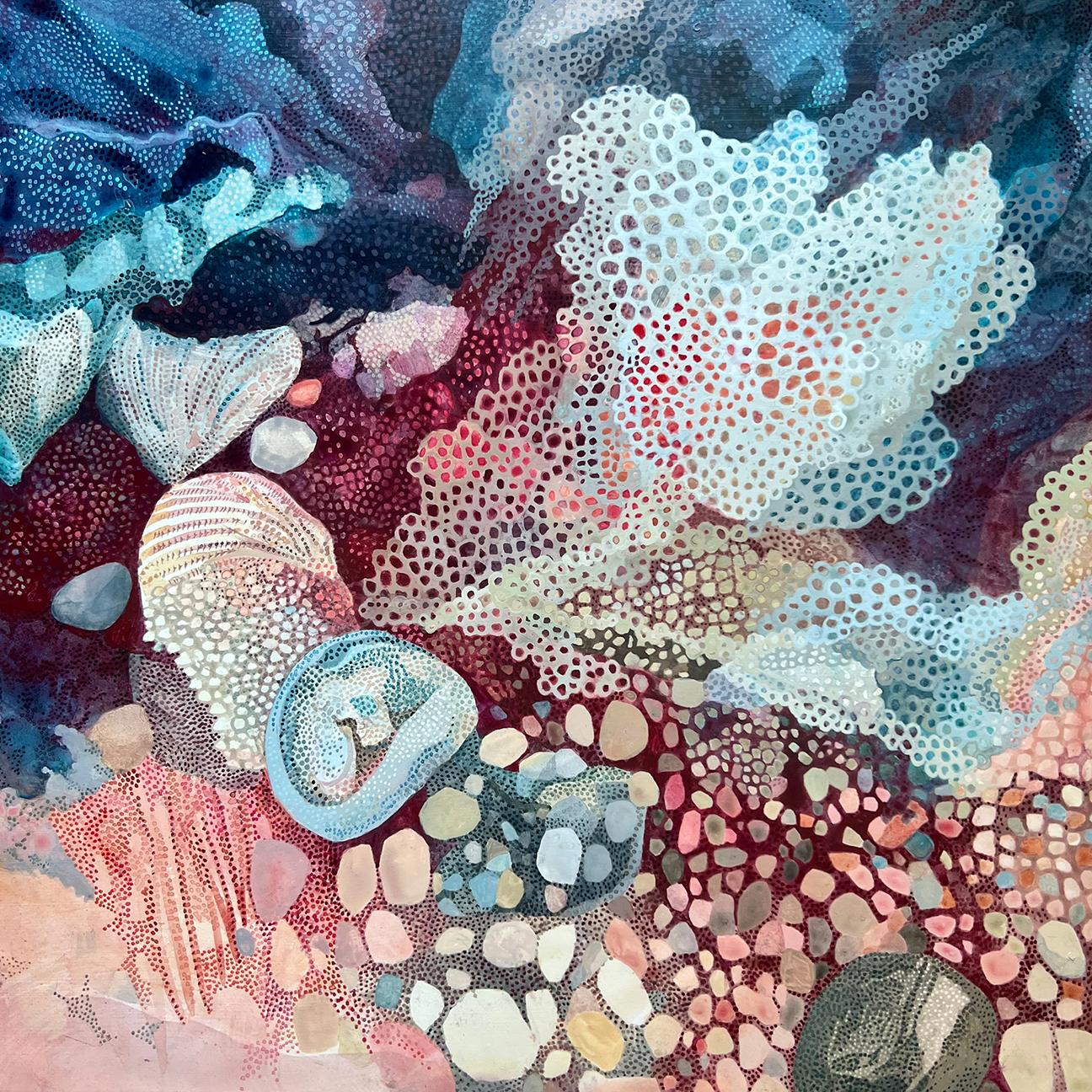
Featured Work: Photos
deep dive
acrylic on polyester film
2024
Jacqui Crocetta’s work took a dramatic turn in early 2020, upon discovery of a beach that was heavily polluted with plastic trash. Shocked by the volume of plastic on the beach, Crocetta was propelled to collect as much trash as she could carry, while documenting the process. Later, she transferred her beach clean-up photos onto single-use plastic trash in a series of mixed-media abstract wall works. That series led to ocean-inspired paintings and installations addressing issues such as the microplastic crisis, rising sea levels, coral bleaching, and overfishing.
As Crocetta’s ocean series evolved, she developed a hybrid style of painting and drawing comprised of loose washes of color and intricate patterns and mark-making. Her underwater ocean paintings include thousands of tiny dots of acrylic paint on polyester film, referencing the microplastic crisis, which threatens the environment and human health.
Sweeping gestures and the pulse of tattoo-like marks activate the surface of the paintings in this series, emphasizing movement—a signature characteristic of all living organisms. The intricate composition is intended to draw the viewer in for prolonged looking, to facilitate moments of mindfulness.
While elements of these works reference nature, these underwater scenes are imaginary. In these compositions, harmony rubs up against discord to create a subtle friction in the work that makes space to think about our impact on the environment.
surge
acrylic on polyester film
2024
Jacqui Crocetta’s work took a dramatic turn in early 2020, upon discovery of a beach that was heavily polluted with plastic trash. Shocked by the volume of plastic on the beach, Crocetta was propelled to collect as much trash as she could carry, while documenting the process. Later, she transferred her beach clean-up photos onto single-use plastic trash in a series of mixed-media abstract wall works. That series led to ocean-inspired paintings and installations addressing issues such as the microplastic crisis, rising sea levels, coral bleaching, and overfishing.
As Crocetta’s ocean series evolved, she developed a hybrid style of painting and drawing comprised of loose washes of color and intricate patterns and mark-making. Her underwater ocean paintings include thousands of tiny dots of acrylic paint on polyester film, referencing the microplastic crisis, which threatens the environment and human health.
Sweeping gestures and the pulse of tattoo-like marks activate the surface of the paintings in this series, emphasizing movement—a signature characteristic of all living organisms. The intricate composition is intended to draw the viewer in for prolonged looking, to facilitate moments of mindfulness.
While elements of these works reference nature, these underwater scenes are imaginary. In these compositions, harmony rubs up against discord to create a subtle friction in the work that makes space to think about our impact on the environment.
buoyant
acrylic on polyester film
2025
Jacqui Crocetta’s work took a dramatic turn in early 2020, upon discovery of a beach that was heavily polluted with plastic trash. Shocked by the volume of plastic on the beach, Crocetta was propelled to collect as much trash as she could carry, while documenting the process. Later, she transferred her beach clean-up photos onto single-use plastic trash in a series of mixed-media abstract wall works. That series led to ocean-inspired paintings and installations addressing issues such as the microplastic crisis, rising sea levels, coral bleaching, and overfishing.
As Crocetta’s ocean series evolved, she developed a hybrid style of painting and drawing comprised of loose washes of color and intricate patterns and mark-making. Her underwater ocean paintings include thousands of tiny dots of acrylic paint on polyester film, referencing the microplastic crisis, which threatens the environment and human health.
Sweeping gestures and the pulse of tattoo-like marks activate the surface of the paintings in this series, emphasizing movement—a signature characteristic of all living organisms. The intricate composition is intended to draw the viewer in for prolonged looking, to facilitate moments of mindfulness.
While elements of these works reference nature, these underwater scenes are imaginary. In these compositions, harmony rubs up against discord to create a subtle friction in the work that makes space to think about our impact on the environment.
pulse
acrylic on polyester film
2025
Jacqui Crocetta’s work took a dramatic turn in early 2020, upon discovery of a beach that was heavily polluted with plastic trash. Shocked by the volume of plastic on the beach, Crocetta was propelled to collect as much trash as she could carry, while documenting the process. Later, she transferred her beach clean-up photos onto single-use plastic trash in a series of mixed-media abstract wall works. That series led to ocean-inspired paintings and installations addressing issues such as the microplastic crisis, rising sea levels, coral bleaching, and overfishing.
As Crocetta’s ocean series evolved, she developed a hybrid style of painting and drawing comprised of loose washes of color and intricate patterns and mark-making. Her underwater ocean paintings include thousands of tiny dots of acrylic paint on polyester film, referencing the microplastic crisis, which threatens the environment and human health.
Sweeping gestures and the pulse of tattoo-like marks activate the surface of the paintings in this series, emphasizing movement—a signature characteristic of all living organisms. The intricate composition is intended to draw the viewer in for prolonged looking, to facilitate moments of mindfulness.
While elements of these works reference nature, these underwater scenes are imaginary. In these compositions, harmony rubs up against discord to create a subtle friction in the work that makes space to think about our impact on the environment.
mineral fizz
acrylic on polyester film
2025
Jacqui Crocetta’s work took a dramatic turn in early 2020, upon discovery of a beach that was heavily polluted with plastic trash. Shocked by the volume of plastic on the beach, Crocetta was propelled to collect as much trash as she could carry, while documenting the process. Later, she transferred her beach clean-up photos onto single-use plastic trash in a series of mixed-media abstract wall works. That series led to ocean-inspired paintings and installations addressing issues such as the microplastic crisis, rising sea levels, coral bleaching, and overfishing.
As Crocetta’s ocean series evolved, she developed a hybrid style of painting and drawing comprised of loose washes of color and intricate patterns and mark-making. Her underwater ocean paintings include thousands of tiny dots of acrylic paint on polyester film, referencing the microplastic crisis, which threatens the environment and human health.
Sweeping gestures and the pulse of tattoo-like marks activate the surface of the paintings in this series, emphasizing movement—a signature characteristic of all living organisms. The intricate composition is intended to draw the viewer in for prolonged looking, to facilitate moments of mindfulness.
While elements of these works reference nature, these underwater scenes are imaginary. In these compositions, harmony rubs up against discord to create a subtle friction in the work that makes space to think about our impact on the environment.
rebirth
acrylic on board
2024
